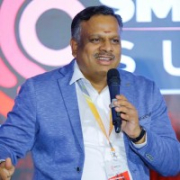

Salesforce Commerce Cloud and Sana Commerce compete in the e-commerce platform market. Sana Commerce seems to have the upper hand for ERP-driven businesses due to its seamless integration with Microsoft Dynamics and SAP.
Features: Salesforce Commerce Cloud provides scalability, AI-driven personalization, and tools for multi-channel retail operations. Sana Commerce offers deep ERP integration, enhancing business processes and minimizing manual data handling.
Room for Improvement: Salesforce Commerce Cloud could improve its complexity in deployment and reduce costs. It might also enhance integration capabilities specific to ERP systems. Sana Commerce could benefit from expanding features beyond ERP integration, offering more versatility in multi-channel operations and enhancing UI customizability.
Ease of Deployment and Customer Service: Salesforce Commerce Cloud supports flexible deployment with comprehensive resources, though it can be complex. Sana Commerce provides a straightforward deployment model that simplifies onboarding, especially for existing ERP systems. Salesforce offers robust support, while Sana is noted for tailored service during deployment.
Pricing and ROI: Salesforce Commerce Cloud generally has higher initial costs, justified by long-term ROI due to scalability and optimization. Sana Commerce offers a cost-effective setup, appealing to ERP users with streamlined operations and lower maintenance, enhancing ROI through efficiency and reduced setup costs.
| Product | Market Share (%) |
|---|---|
| Salesforce Commerce Cloud | 5.8% |
| Sana Commerce | 1.9% |
| Other | 92.3% |

| Company Size | Count |
|---|---|
| Small Business | 15 |
| Midsize Enterprise | 8 |
| Large Enterprise | 11 |
Salesforce Commerce Cloud offers scalable and customizable eCommerce solutions ideal for consumer packaged goods and retail businesses, featuring robust CRM and order management capabilities.
Salesforce Commerce Cloud is a dynamic eCommerce platform known for its strong mobile support and seamless third-party integrations. It enables businesses to personalize user experiences and efficiently manage leads and opportunities. Despite facing challenges with integration and pricing for small businesses, its scalability and partner ecosystem make it highly adaptable for diverse needs.
What are Salesforce Commerce Cloud's key features?Salesforce Commerce Cloud is widely implemented in sectors like retail and consumer packaged goods for its CRM functionalities, customized order management, and automation capabilities. Businesses utilize it to create omnichannel platforms and tailored user experiences, especially benefitting financial, insurance, and banking services through its integrability.
Sana Commerce is a SaaS-based B2B e-commerce solution that integrates seamlessly into your tech stack using agile cloud software to enable a stellar e-commerce web store with guaranteed uptime and minimal maintenance.
How? By making your SAP or Microsoft Dynamics ERP and e-commerce work as one. SCC harnesses the power of your ERP to create an e-commerce platform that automates tedious business processes and delights consumers with easy-to-use functionality. It eliminates the system silos, unnecessary complexities and compromises caused by mainstream e-commerce solutions. SCC drives growth and future proofs your business model by facilitating a smooth omnichannel order process without hurdles.
Sana Commerce is a certified SAP and Microsoft Gold partner, backed by a strong global partner network and recognized by leading industry experts.
Want to know if we can meet your B2B needs? Contact us for a personalized demo.
We monitor all eCommerce Platforms reviews to prevent fraudulent reviews and keep review quality high. We do not post reviews by company employees or direct competitors. We validate each review for authenticity via cross-reference with LinkedIn, and personal follow-up with the reviewer when necessary.